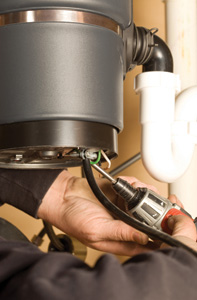Plumbing vs. process piping
One part is regulated by the plumbing code; the other is regulated by engineering design.


|
| Photo credit: ©istockphoto.com/BanksPhotos |
Talk with any plumbing inspector and the one gray area in which there seems to be no agreement is when plumbing becomes process piping. Of course, this is a very important distinction. One part is regulated by the plumbing code; the other is regulated by engineering design. There are exceptions to that, such as certain hydronic systems regulated by the mechanical code. But I am not speaking about a building’s heating or cooling systems.
Let me give you an example. If you have a soft drink dispenser, is that plumbing or process piping? The answer is process piping. Once the water passes through the backflow preventer, it is no longer plumbing. It is water used for a soft drink.
If you want to take a simplistic approach, that water is now going to be flavored and carbonated. Hence, it is far from potable water. However, it is drinkable for anyone who enjoys a soft drink.
You may be wondering what difference this all makes. In one jurisdiction, a large football stadium was under construction. The city had strict requirements in its plumbing code requiring all water lines to be piped in copper tube. No other materials were permitted.
Many stadiums have centralized soft drink systems, which is what was being installed in this stadium. The soft drinks are piped from various central locations to individual dispensers. The plumbing inspector wanted all those lines piped in copper tube.
The problem is when a carbonated beverage comes in contact with copper tube, it picks up an excessive quantity of copper from the tubing. The excess copper in the carbonated beverage is known to cause vomiting. Not something you want from a soft drink.
While the inspector was adamant about piping the lines in copper tube, the only legal remedy was to prove the system was not plumbing, it was process piping. The result: plastic tubing went in and nobody vomited from drinking soft drinks. Any vomiting probably came from excessive beer drinking.
This first example seems to imply that, once you install a backflow preventer, it is no longer plumbing and the system becomes process piping. To a certain extent, that is true. But it is not true in every situation.
An example of an exeption would be a plumbing fixture with a submerged inlet. Many commercial food waste disposers have a water supply that is connected below the flood level rim of the unit. Vacuum breakers are installed on the water supply. The food waste disposer connects to the drainage system. For this example, the food waste disposer and all the associated piping is plumbing. The plumbing code would regulate the installation.
I selected this example because there are units that look similar to food waste disposers but are identified as pulpers. A pulper receives food waste, combines it with water and transports it for further use, often to a storage tank. The further use is typically either for composting or for energy recovery. Some units dewater the food waste and discharge that water to the drainage system.
A pulper is not a plumbing appliance. It also is not a part of the plumbing system. This is process piping used for a process. In this case, the process is food waste. While there may be a drain on the pulper, that drain is similar to other process equipment that has a water discharge of some sort.
The plumbing code regulates that discharge, requiring either a floor drain or an indirect waste receptor. The pulper and associated piping is not regulated by the plumbing code.
Avoid the fees
Plumbing is associated with plumbing fixtures. If plumbing fixtures are not involved, it probably is process piping, not plumbing. If you are wondering what is the big deal, it all comes down to money.
If the plumbing code regulates it, you are required to take out a permit, pay a permit fee and have an inspection. You also are required to meet all the material requirements of the plumbing code.
If it is process piping, the only permit fee and inspection are for the backflow preventer. After that, the engineer of record regulates the installation.
This is important for any changes to the piping or system. In a process piping system, you can make whatever changes you want to to the system without having to contact the plumbing inspections department. You can do major modifications or complete change-outs without going through city hall.
I have a friend who works at a refinery. Piping is changed at his facility every day. New systems are being added and old systems are being removed. All this work is done without the need for a permit.
Another advantage of being classified as a process system is you can use whatever piping material, fittings and valves are appropriate for the system. Many systems use piping that is not listed as acceptable material in the plumbing code. That’s OK. It only has to be acceptable for the process system. In many cases, the plumbing inspector is not going to even understand the process system. Hence, how could he inspect it?
Going back to that soft drink system, the piping used to transport the carbonated beverage is not plumbing PEX nor is it CPVC. It is a tubing that is certified for taste and odor. It might seem strange but the soft drink providers don’t want the tubing to affect the taste of the soft drink. They have a different concern than the plumbing code.
Don’t get stuck having to pay higher fees or having systems inspected that are not plumbing. Know where the separation line is between plumbing and process piping. In many installations, the line is drawn on the outlet of the backflow preventer.
When in doubt, just look up the definition of plumbing in the plumbing code. You will find that the definition is written around plumbing fixtures. Process piping is not included within the definition. Don’t be afraid to say, “This is not plumbing, it is process piping.”
HELPFUL LINKS:
Looking for a reprint of this article?
From high-res PDFs to custom plaques, order your copy today!




